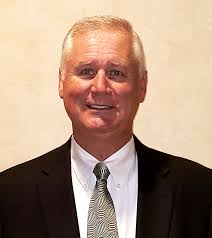If you are short on funds to deal with an emergency, you may have considered withdrawing from your 401(k). You must know that you cannot simply make a withdrawal from your 401(k) any time you’d like. A 401(k) retirement account is typically designed to allow you to withdraw at age 59½. If you take a distribution before that age, you are slapped a 10% penalty, plus income tax on the amount withdrawn. That being said, there are several specific circumstances when you can take 401(k) withdrawals to cover emergency costs. These exceptions are called hardship withdrawals.
However, before you consider taking a hardship withdrawal, you must know what it is, the pros and cons of it, and whether tapping into 401(k) early may be worth considering.
Key Takeaways
What is 401(k) hardship, and how does it work?
The IRS allows you to withdraw money from your 401(k) if your financial need is heavy and immediate. The IRS lists the following 401(k) hardship withdrawal reasons you can qualify for:
401(k) Hardship Withdrawal Rules
Not all 401(k) plans allow hardship withdrawals. When the employers set up the 401(k) plan for their employees, they also set the requirements for hardship withdrawals. So, it’s up to your employer and the plan custodian to approve your request for a hardship withdrawal. Unlike a 401(k) loan, you cannot repay a hardship withdrawal.
Taxes Affecting a 401(k) Hardship Withdrawal
401(k) hardship withdrawals are taxed as ordinary income. And if you are under age 59½, there is a penalty of 10% applied if you don’t qualify for an exception. If you are under 59½, you can avoid the 10% penalty if:401(k) Hardship Withdrawal Limits
If you meet the criteria to qualify for a 401(k) hardship withdrawal, you need to determine how much money you can withdraw. In most cases, you are allowed to withdraw only what you need. For example, if your home repair cost after an earthquake is $15,000, you wouldn’t be able to withdraw more than that. However, you may be allowed to take additional funds to cover related costs, such as taxes on the withdrawal transaction.
In 2020, the CARES Act allowed individuals to withdraw up to $100,000 to cover COVID-related costs without the 10% early withdrawal penalty. The act also allowed individuals to make tax payments over a period of three years.
How to avail hardship withdrawals from 401(k)?
- Talk to your plan sponsor
Your plan sponsorcould be a human resources representative at your company or a financial advisor assigned to the plan. You can contact them to find out if you are eligible and provide the paperwork needed for a hardship withdrawal. - Provide proof of hardship
In some cases, your 401(k) plan provider might ask for proof of hardship, which can include financial statements, a notarized statement from an accountant, or an eviction notice. - Get approved for the withdrawal
Once your documents are verified, your plan administrator will give you the approval to make a hardship withdrawal.
Things You Should Know About Hardship Withdrawal
Before you decide to make a hardship withdrawal, there are a few things you need to consider:
Alternative to a 401(k) Hardship Withdrawal – 401(k) Loan
Depending upon your financial situation and the nature of your need, you may prefer taking a 401(k) loan than taking a hardship withdrawal from your 401(k) plan:
If your plan allows it, a 401(k) loan might be a more desirable alternative than a hardship withdrawal. If you take a 401(k) loan, you have to return the amount along with interest to the account. There is no tax implication if you repay the amount in full within the specified timeframe. If you leave your job before paying off your 401(k) loan, the loan balance is considered as a withdrawal that attracts tax and a 10% penalty if you are not age 59½ and above.
The Bottom Line
If you have to use your retirement saving before age 59½, a 401(k) loan might be a sensible option. But if your plan doesn’t allow borrowing, a hardship withdrawal can be a possibility. However, proceed with it only after understanding its underlying implications.

Rick Pendykoski is the owner of Self Directed Retirement Plans LLC, a retirement planning company based in Goodyear, AZ. He has over three decades of experience working with investments and retirement planning, and over the last ten years has turned his focus to self-directed ira accounts and alternative investments. If you need help and guidance with traditional or alternative investments, call him today (866) 639-0066.




